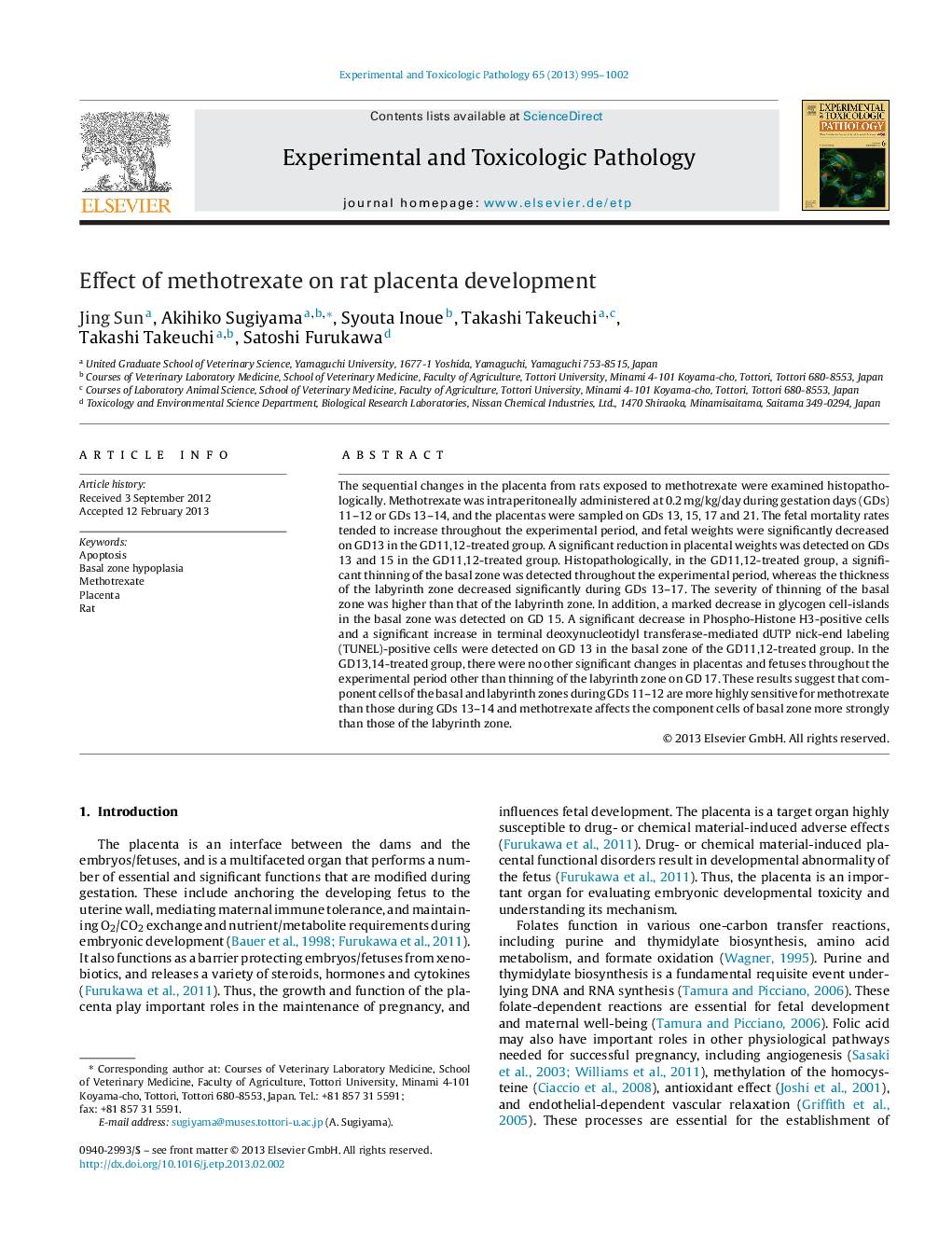| Article ID | Journal | Published Year | Pages | File Type |
|---|---|---|---|---|
| 5817171 | Experimental and Toxicologic Pathology | 2013 | 8 Pages |
The sequential changes in the placenta from rats exposed to methotrexate were examined histopathologically. Methotrexate was intraperitoneally administered at 0.2Â mg/kg/day during gestation days (GDs) 11-12 or GDs 13-14, and the placentas were sampled on GDs 13, 15, 17 and 21. The fetal mortality rates tended to increase throughout the experimental period, and fetal weights were significantly decreased on GD13 in the GD11,12-treated group. A significant reduction in placental weights was detected on GDs 13 and 15 in the GD11,12-treated group. Histopathologically, in the GD11,12-treated group, a significant thinning of the basal zone was detected throughout the experimental period, whereas the thickness of the labyrinth zone decreased significantly during GDs 13-17. The severity of thinning of the basal zone was higher than that of the labyrinth zone. In addition, a marked decrease in glycogen cell-islands in the basal zone was detected on GD 15. A significant decrease in Phospho-Histone H3-positive cells and a significant increase in terminal deoxynucleotidyl transferase-mediated dUTP nick-end labeling (TUNEL)-positive cells were detected on GD 13 in the basal zone of the GD11,12-treated group. In the GD13,14-treated group, there were no other significant changes in placentas and fetuses throughout the experimental period other than thinning of the labyrinth zone on GD 17. These results suggest that component cells of the basal and labyrinth zones during GDs 11-12 are more highly sensitive for methotrexate than those during GDs 13-14 and methotrexate affects the component cells of basal zone more strongly than those of the labyrinth zone.
